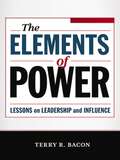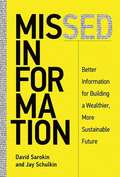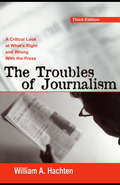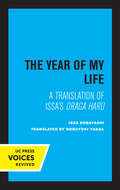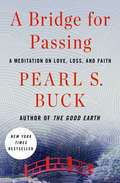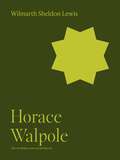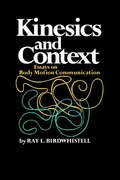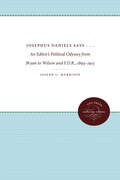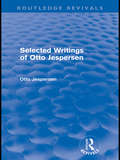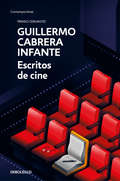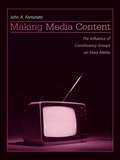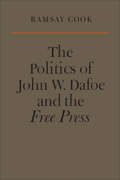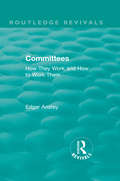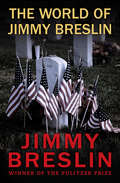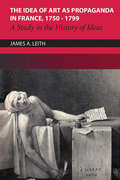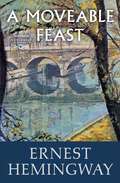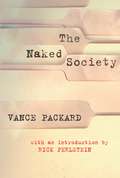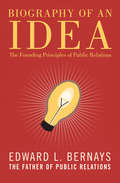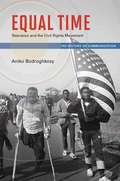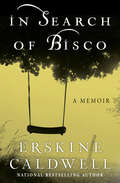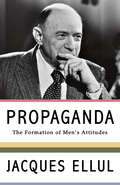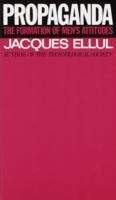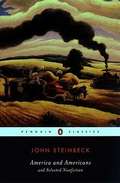- Table View
- List View
The Elements of Power: Lessons on Leadership and Influence
by Terry R. BaconWhat do a person's knowledge, expressiveness, history, character, and attraction have in common? Or his or her role, resources, information, network, and reputation? Each is a key to either personal or organizational power, and together they open the complex combination lock on the door of true leadership and irresistible influence. The Elements of Power combines the latest research on the nature of power all over the world with a handy self-assessment and invaluable insight into: How power works in organizations How people use and lose power The relationship between power and leadership What makes famous people powerful or what diminishes their power Sources of power and how to build each one Leading and influencing others more effectively Complete with "Portraits in Power" examining key business figures and world leaders alike, the full effect is an accessible and unprecedented pipeline to the many sources and types of internal and external power, including the most valuable of all: the power of will.
Missed Information: Better Information for Building a Wealthier, More Sustainable Future
by David Sarokin Jay SchulkinInformation is power. It drives commerce, protects nations, and forms the backbone of systems that range from health care to high finance. Yet despite the avalanche of data available in today's information age, neither institutions nor individuals get the information they truly need to make well-informed decisions. Faulty information and sub-optimal decision-making create an imbalance of power that is exaggerated as governments and corporations amass enormous databases on each of us. Who has more power: the government, in possession of uncounted terabytes of data (some of it obtained by cybersnooping), or the ordinary citizen, trying to get in touch with a government agency? In Missed Information, David Sarokin and Jay Schulkin explore information -- not information technology, but information itself -- as a central part of our lives and institutions. They show that providing better information and better access to it improves the quality of our decisions and makes for a more vibrant participatory society.Sarokin and Schulkin argue that freely flowing information helps systems run more efficiently and that incomplete information does just the opposite. It's easier to comparison shop for microwave ovens than for doctors or hospitals because of information gaps that hinder the entire health-care system. Better information about such social ills as child labor and pollution can help consumers support more sustainable products. The authors examine the opacity of corporate annual reports, the impenetrability of government secrets, and emerging techniques of "information foraging." The information imbalance of power can be reconfigured, they argue, with greater and more meaningful transparency from government and corporations.
The Troubles of Journalism: A Critical Look at What's Right and Wrong With the Press
by William A. HachtenThis book looks at criticisms of the journalism profession and evaluates many of the changes in journalism--both positive and negative. In addition, it suggests what the many changes mean for this nation and indeed for the world at large, as American journalism--its methods and standards--has markedly influenced the way many millions overseas receive news and view their world. Based on author William Hachten's 50-year involvement with newspapers and journalism education, The Troubles of Journalism serves as a realistic examination of the profession, and is appropriate for upper-level undergraduate courses in journalism and media criticism. Since the previous edition of The Troubles of Journalism, many significant challenges have occurred in the media: the events of September 11, the war on terrorism, mergers and consolidation of media ownership, new concerns about press credibility, the expanding and controversial role of cable news channels, the growing impact role of news and comment on the Internet, and continuing globalization and controversy over the role of American media in international communications. To do justice to these recent "troubles" of the news media, important additions and modifications have been made in every chapter of this Third Edition.
The Year of My Life, Second Edition: A Translation of Issa's Oraga Haru
by Issa KobayashiThis title is part of UC Press's Voices Revived program, which commemorates University of California Press’s mission to seek out and cultivate the brightest minds and give them voice, reach, and impact. Drawing on a backlist dating to 1893, Voices Revived makes high-quality, peer-reviewed scholarship accessible once again using print-on-demand technology. This title was originally published in 1960.
A Bridge for Passing: A Meditation on Love, Loss, and Faith (Los Jet De Plaza Y J Series)
by Pearl S. BuckThe Nobel Prize–winning and New York Times–bestselling author&’s memoir of making a movie in 1960s Japan, while mourning the loss of her husband. Pearl S. Buck&’s children&’s story, The Big Wave, about two young friends whose lives are transformed when a volcano erupts and a tidal wave engulfs their village, was eventually optioned as a movie. A Bridge for Passing narrates the resulting adventure, the story of the people involved in the movie-making process (including Polish director Tad Danielewski), their many complications while shooting, and the experience of working in Japan at a time when memories of the war remained strong. As much as all this, the book is a poignant reflection on personal crisis, and relates Buck&’s grief over the death of her husband of twenty-five years, Richard Walsh, who was also her editor. A Bridge for Passing offers an intimate view of postwar Japan mixed with Buck&’s heartrending meditation on loss and love. This ebook features an illustrated biography of Pearl S. Buck including rare images from the author&’s estate.
Horace Walpole (The A. W. Mellon Lectures in the Fine Arts #9)
by Wilmarth Sheldon LewisAn illuminating biographical study of the eighteenth-century English man of letters and patron of the artsHorace Walpole (1717–1797) was a collector, printer, novelist, arbiter of taste, and renowned writer of letters. In this book, eminent scholar Wilmarth Sheldon Lewis provides an unprecedented look at the life and work of one of England’s greatest men of letters. Lewis sheds light on Walpole’s relationships with his family and friends, his politics, his writings and printmaking activities, and his correspondence. Featuring portraits of Walpole, his relatives, and friends; images of Walpole's sketches and manuscripts; pages from books printed at Walpole’s Strawberry Hill Press; and views and plans of Strawberry Hill, the house, its rooms and furnishings, and its grounds, and accompanied by Lewis’s extensive annotations, this book provides an invaluable history of an extraordinary man.
Kinesics and Context
by Ray L. BirdwhistellRay L. Birdwhistell, in this study of human body motion (a study he terms kinesics), advances the theory that human communication needs and uses all the senses, that the information conveyed by human gestures and movements is coded and patterned differently in various cultures, and that these codes can be discovered by skilled scrutiny of particular movements within a social context.
Josephus Daniels Says . . .: An Editor's Political Odyssey from Bryan to Wilson and F.D.R., 1894-1913
by Joseph L. MorrisonIn this study, Morrison traces Daniels's editorial opinions and policies from his early editorial apprenticeship to his appointment as Wilson's secretary of the navy. Morrison sheds light on the relationship between Daniels's editorial views and the various forces active in the state and nation between 1890 and 1912.Originally published in 1962.A UNC Press Enduring Edition -- UNC Press Enduring Editions use the latest in digital technology to make available again books from our distinguished backlist that were previously out of print. These editions are published unaltered from the original, and are presented in affordable paperback formats, bringing readers both historical and cultural value.
Selected Writings of Otto Jespersen (Routledge Revivals)
by Otto JespersenThis volume, first published in 1960 to commemorate the one hundredth birthday of Jespersen, collects together as many of his writings as possible in order to allow students of the English language, or indeed of language in general, to read those shorter papers which have hitherto escaped their notice. The layout of the book largely follows the nature of the subjects dealt with: English grammar, phonetics, history of English, language teaching, language in general, international language and miscellaneous papers.
Escritos de cine (estuche: Un oficio del siglo xx, Arcadia todas las noches, Cine o Sardina)
by Guillermo Cabrera InfanteLas tres colecciones de artículos sobre cine de Guillermo Cabrera Infante en un estuche que se disfruta como una función. Director de la cinemateca de Cuba y crítico de cine en su juventud, guionista de Hollywood en su madurez, Guillermo Cabrera Infante fue un apasionado cinéfilo toda su vida. El presente estuche reúne sus tres colecciones de ensayos sobre el tema: Un oficio del siglo xx, Arcadia todas las noches y Cine o sardina. En ellas brillan su espíritu lúdico y la fina ironía, que nos ayudan a comprender el sentido, el contexto y la factura del séptimo arte. De texto en texto y de mirada en mirada, Cabrera Infante repasa la obra de Orson Welles, Alfred Hitchcock, Howard Hawks, John Huston o Vincente Minnelli, así como una plétora de películas clásicas y modernas. Si el cine es el protagonista indiscutible, el crítico-escritor no deja de darle la réplica. Del diálogo entre la pantalla y la palabra surgen textos que no solo aportan una valiosa información, sino que se disfrutan como verdaderas funciones. Sobre el autor y la obra:«Para los que estudiábamos cine, Un oficio del siglo XX era un libro de cabecera.»Fernando Trueba «Ha convertido la crítica cinematográfica en un género literario gracias a su riqueza verbal y a su imaginación.»Mario Vargas Llosa «Cabrera Infante es casi una enciclopedia del cine hollywoodense.»Jacobo Machover, Revista de Libros
Johann Gutenberg: the Inventor of Printing
by Victor ScholdererThis short book draws on legal documents surviving from the 15th century, in an attempt to piece together information about the life of the inventor of the printing press. When all is said and done, however, very little can actually be known about Gutenberg's life.
Making Media Content: The Influence of Constituency Groups on Mass Media (Routledge Communication Series)
by John A. FortunatoMaking Media Content addresses the development of media content and the various factors and constituencies that influence content, such as advertisers, corporate interests, owners, and advocacy groups. It examines the strategic decision-making of mass media organizations as they determine what content they present to their audiences through broadcast, publication, or electronic access. The work focuses on the internal and external influences on media content, laying out the various processes and opening up the topic for further consideration.This book will appeal to academics in mass media, especially those studying the relationship between mass media organizations and public relations, and advertisers. Practitioners of the media, public relations, and advertising fields would be interested because there are practical applications to their industries and explanations of the communication interactions between these groups.
The Politics of John W. Dafoe and the Free Press
by Ramsay CookJohn W. Dafoe was a dominant figure in western Canadian political history during the first half of the twentieth century. As editor of the Winnipeg Free Press from 1901 to 1944, he gained an international reputation for his perceptive analysis of the issues facing Canada and the world. He was at the centre of almost every major political development of his time: he advised prime ministers, was deeply involved in organizing the Progressive party, and was a member of the crucial Rowell-Sirois Commission on federal-provincial relations. His influence was enormous, and at the time of his death he was widely regarded as the nation's most distinguished editor. This book is a study at close quarters of Dafoe, the man of politics. It focuses on the Dafoe who read and studied and the Dafoe who observed men and events; on Dafoe in his centre of operation and at the Free Press and Dafoe moving watchfully about the country and abroad when critical decisions were in the making; on the ideas confided in letters to friends and the ideas delivered in public speeches; on contributions made to conferences and commissions and advice given to political figures. The book is not intended as a complete biography of Dafoe in all his aspects, but it is even less an abstract treatise in the field of political theory. It is the biography of a political mind. The impression is of a mind recalled to its full vigour, for no prejudgments have been made about it and no restraints upon it. Ramsay Cook treats his subject with candour, but also with understanding and a sense of humour. He has ordered his material with extraordinary skill, so that his book is enjoyable reading as well as a valuable source of information about a distinguished Canadian and a momentous period in Canadian history.
Routledge Revivals: How They Work and How to Work Them (Routledge Revivals)
by Edgar AnsteyFirst published in 1963, Edgar Anstey’s work gives a detailed account on the inner workings of the committee. Within a committee, different interests nearly always need to be represented when a decision must be taken, and contributions are required from people of different outlook or expert knowledge. A committee is often the only means of achieving a workable solution to a problem. This book attempts to analyse the functioning of different kinds of committee groups and to bring out the factors which make for efficiency and inefficiency. Types of committee and their purpose are discussed, as well as how to lead a discussion to bring out a genuine group view, the roles of chairman and secretary, how individuals influence committee decisions, good and bad tactics, and how to deal with difficult members.
The World of Jimmy Breslin: World Without End, Amen; The Gang That Couldn't Shoot Straight; Table Money; And Forsaking All Others
by Jimmy BreslinThe Pulitzer Prize–winning journalist&’s early columns &“peopled by some of the funniest, looniest and saddest characters anywhere outside of a zoo&” (The New York Times). In the 1960s, as the once-proud New York Herald Tribune spiraled into bankruptcy, the brightest light in its pages was an ebullient young columnist named Jimmy Breslin. While ordinary columnists wrote about politics, culture, or the economy, Breslin&’s chief topics were the city and Breslin himself. He was chummy with cops, arsonists, and thieves, and told their stories with grace, wit, and lightning-quick prose. Whether covering the five boroughs, Vietnam, or the death of John F. Kennedy, Breslin managed to find great characters wherever he went. This collection includes some of Breslin&’s most famous early writing. Here are the unforgettable New Yorkers Sam Silverware and Larry Lightfingers, the celebrated interview with President Kennedy&’s gravedigger, and the classic &“People I&’m Not Talking To Next Year.&” But the most important voice here is Breslin&’s—as vibrant as ever. This ebook features an illustrated biography of Jimmy Breslin including rare photos and never-before-seen documents from the author&’s personal collection.
The Idea of Art as Propaganda in France, 1750-1799: A Study in the History of Ideas (The Royal Society of Canada Special Publications #No. 8)
by James LeithOne of the most modern features of the French Revolution was its intention of shaping a new kind of citizen by exposing him from childhood to inspirational messages and behavioral models. In this effort to regenerate the masses the French Revolutionaries sought to employ not only schools, but newspapers, festivals, dramas, poems, songs, paintings, statues, and engravings as well. At the peak of the Terror, French leaders brough tthe West to the threshold of the totalitarian state in the fullest sense of the world: they established a single party state, directed a regimented economy, created a mass army, and sought to mobilize all the media capable of influencing the human mind. In was an interest in both art and the Revolution which led Professor Leith to explore the groth of the idea of using art as one instrument of propaganda. The idea proved to have deep roots in western civilization, going back to classical thinkers, medieval churchmen, and the art officials of such monarchs as Louis XIV. But following the hedonistic rococo art of the first half of the eighteenth century, this idea of didactic art took on a new lease of life, reaching a crescendo during the Terror. This book analyses the contribution of the philosophes, the Encyclopedists, royal officials, art critics, and revolutionary leaders to the resurgence of the idea; it also probes the peculiar psychological assumptions which led eighteeneth-century thinkers to believe in the efficacy of visual propaganda. The outcome of this idea of art as an ideological weapon was involved in the fate of the Revolution itself, yet it was also affected by certain curious tensions already evident in the minds of its advocates under the Old Régime. Lingering interest in purely aesthetic values,k affirmation of the need for creative freedom, and determination to maintain French cultural hegemony, all complicated the effort to turn art into a vehicle of civic instruction. The final chapter examines the rôle of these tensions in the dénouement of the idea in the closing phase of the Revolution.This book should appeal not only to those interested in French civilization, the age of Enlightment, and they French Revolution, but to those concerned with the rôle of art and the artist in modern society as well.
A Moveable Feast (Virago Modern Classics)
by Ernest HemingwayErnest Hemingway's classic memoir of Paris in the 1920s, now available in a restored edition, includes the original manuscript along with insightful recollections and unfinished sketches.Published posthumously in 1964, A Moveable Feast remains one of Ernest Hemingway's most enduring works. Since Hemingway's personal papers were released in 1979, scholars have examined the changes made to the text before publication. Now, this special restored edition presents the original manuscript as the author prepared it to be published. Featuring a personal Foreword by Patrick Hemingway, Ernest's sole surviving son, and an Introduction by grandson of the author, Seán Hemingway, editor of this edition, the book also includes a number of unfinished, never-before-published Paris sketches revealing experiences that Hemingway had with his son, Jack, and his first wife Hadley. Also included are irreverent portraits of literary luminaries, such as F. Scott Fitzgerald and Ford Maddox Ford, and insightful recollections of Hemingway's own early experiments with his craft. Widely celebrated and debated by critics and readers everywhere, the restored edition of A Moveable Feast brilliantly evokes the exuberant mood of Paris after World War I and the unbridled creativity and unquenchable enthusiasm that Hemingway himself epitomized.
The Naked Society
by Rick Perlstein Vance PackardOriginally published in 1964, The Naked Society was the first book on the threats to privacy posed by new technologies such as modern surveillance techniques and methods for influencing human behavior. This all new edition of the book features an introduction by noted historian Rick Perlstein.
Biography of an Idea: The Founding Principles of Public Relations
by Edward L. BernaysThe father of public relations looks back on a landmark life spent shaping trends, preferences, and general opinion A twentieth-century marketing visionary, Edward L. Bernays brilliantly combined mastery of the social sciences with a keen understanding of human psychology to become one of his generation's most influential social architects. In Biography of an Idea, Bernays traces the formative moments of his career, from his time in the Woodrow Wilson administration as one of the nation's key wartime propagandists to his consultancy for such corporate giants as Procter & Gamble, General Electric, and Dodge Motors. While working with the American Tobacco Company, Bernays launched his now-infamous Lucky Strike campaign, which effectively ended the long-standing taboo against women smoking in public. With his vast knowledge of the psychology of the masses, Bernays was in great demand, advising high-profile officials and counseling the tastemakers of his generation. His masterful and at times manipulative techniques had longstanding influences on social and political beliefs as well as on cultural trends. Biography of an Idea is a fascinating look at the birth of public relations--an industry that continues to hold sway over American society.
Equal Time: Television and the Civil Rights Movement
by Aniko BodroghkozyEqual Time: Television and the Civil Rights Movement explores the crucial role of network television in reconfiguring new attitudes in race relations during the civil rights movement. Due to widespread coverage, the civil rights revolution quickly became the United States' first televised major domestic news story. This important medium unmistakably influenced the ongoing movement for African American empowerment, desegregation, and equality. Aniko Bodroghkozy brings to the foreground network news treatment of now-famous civil rights events including the 1965 Selma voting rights campaign, integration riots at the University of Mississippi, and the March on Washington, including Martin Luther King's "I Have a Dream" speech. She also examines the most high-profile and controversial television series of the era to feature African American actors--East Side/West Side, Julia, and Good Times--to reveal how entertainment programmers sought to represent a rapidly shifting consensus on what "blackness" and "whiteness" meant and how they now fit together.
In Search of Bisco: A Memoir
by Erskine CaldwellIn this travelogue and memoir, groundbreaking novelist Erskine Caldwell looks back at a life lived in the troubled South Five decades removed from his own Southern childhood, novelist Erskine Caldwell sets out on a journey to find an old friend—a friend lost to him through the culture of segregation. As Caldwell follows a trail through Georgia, South Carolina, and much of the Deep South in search of his black childhood friend Bisco, his interviews with white and black Americans expose a range of attitudes that are tragic, if not surprising. Published first in the mid-1960s just as the South was undergoing a radical transformation by freedom marches and sit-ins, In Search of Bisco offers a heartfelt account of the civil rights movement by one of the region&’s fiercest critics and most prominent sons. This ebook features an illustrated biography of Erskine Caldwell including rare photos and never-before-seen documents courtesy of the Dartmouth College Library.
Propaganda: The Formation of Men's Attitudes
by Jacques EllulThis seminal study and critique of propaganda from one of the greatest French philosophers of the 20th century is as relevant today as when it was first published in 1962. Taking not only a psychological approach, but a sociological approach as well, Ellul&’s book outlines the taxonomy for propaganda, and ultimately, it&’s destructive nature towards democracy. Drawing from his own experiences fighting for the French resistance against the Vichy regime, Ellul offers a unique insight into the propaganda machine.
Propaganda: The Formation of Men's Attitudes
by Jacques EllulJacques Ellul's view of propaganda and his approach to the study of propaganda are new. The principal difference between his thought edifice and most other literature on propaganda is that Ellul regards propaganda as a sociological phenomenon rather than as something made by certain people for certain purposes.
America and Americans and Selected Nonfiction
by John Steinbeck Jackson J. Benson Susan ShillinglawMore than four decades after his death, John Steinbeck remains one of the nation's most beloved authors. Yet few know of his career as a journalist who covered world events from the Great Depression to Vietnam. Now, this distinctive collection offers a portrait of the artist as citizen, deeply engaged in the world around him. In addition to the complete text of Steinbeck's last published book, America and Americans, this volume brings together for the first time more than fifty of Steinbeck's finest essays and journalistic pieces on Salinas, Sag Harbor, Arthur Miller, Woody Guthrie, the Vietnam War and more. This edition is edited by Steinbeck scholar Susan Shillinglaw and Steinbeck biographer Jackson J. Benson. .
Joseph Pulitzer: and the New York World
by George JuergensTo determine how and why Pulitzer turned the unsuccessful New York World into the most widely read and probably the most prosperous newspaper in the country, Professor Juergens isolates and analyzes the special qualities of Pulitzer's new style of journalism.
